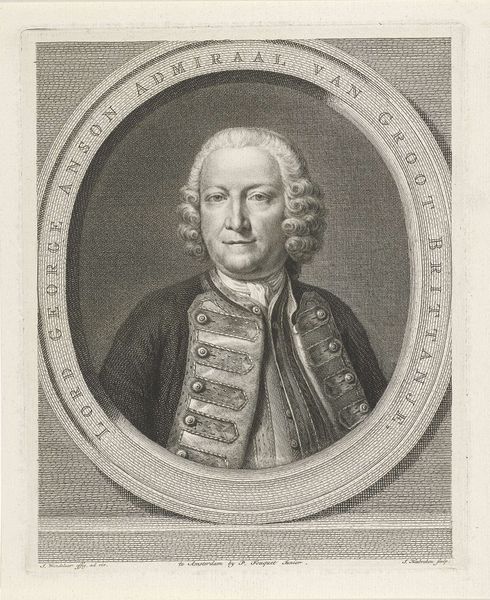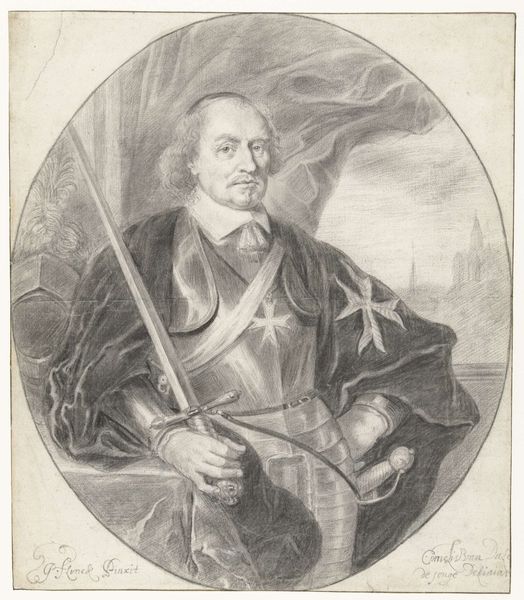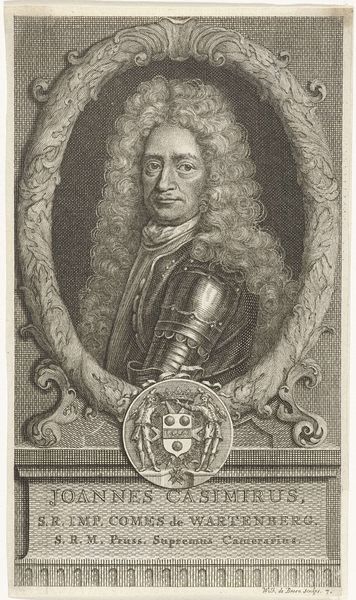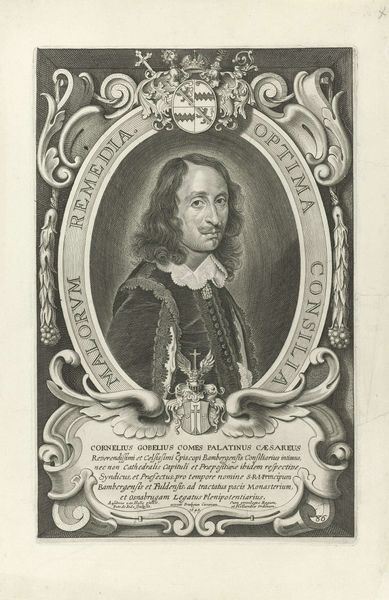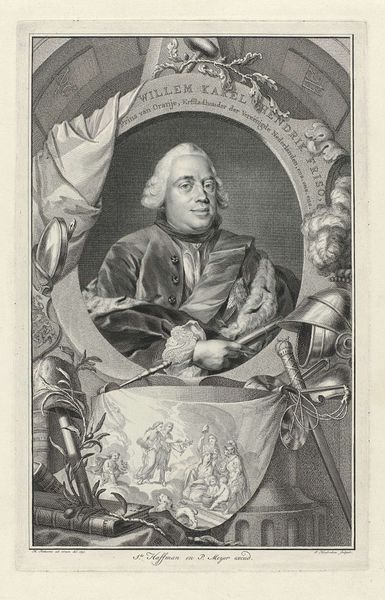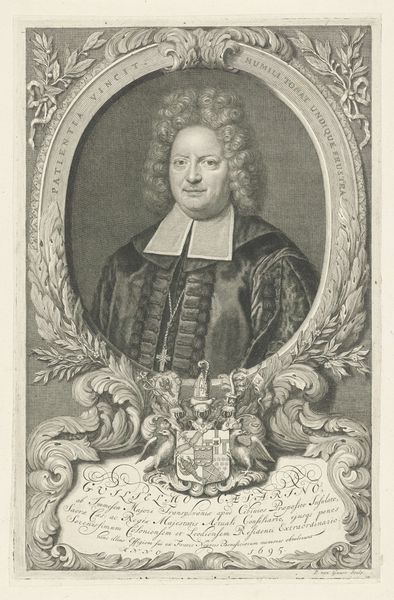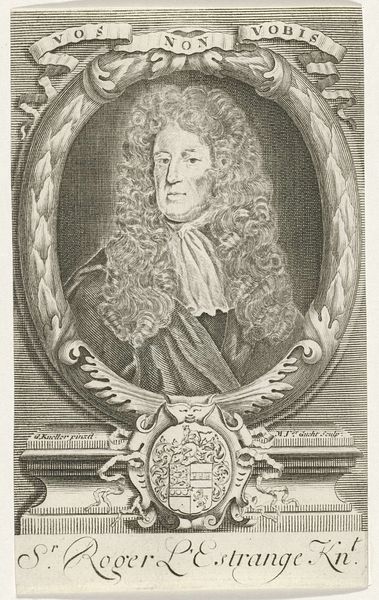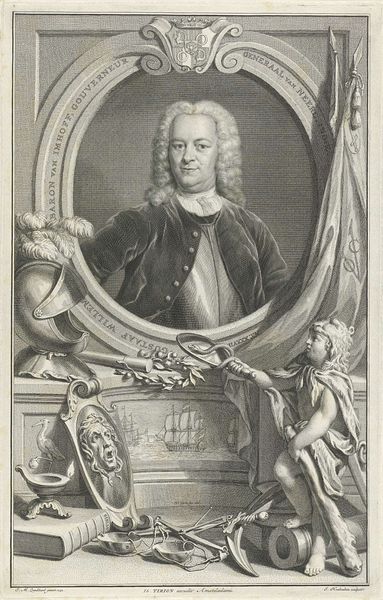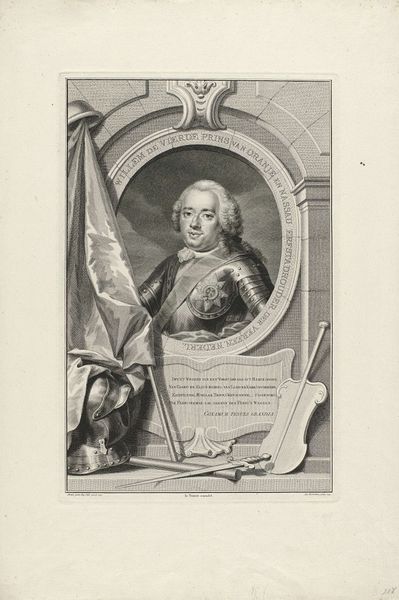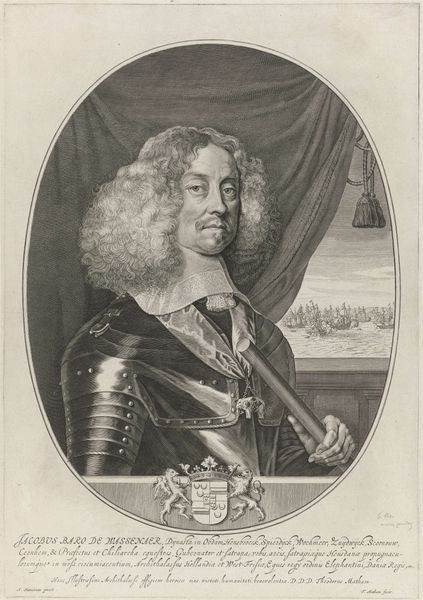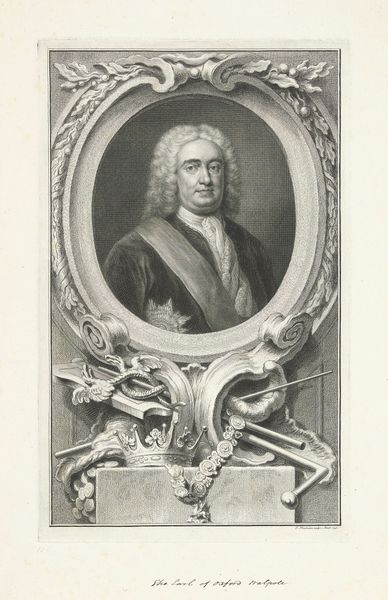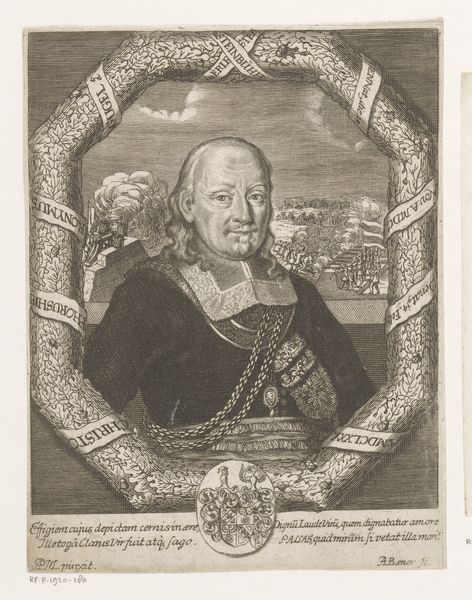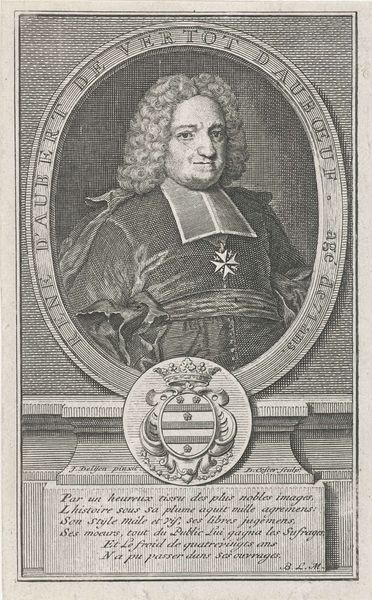
print, engraving
#
portrait
#
baroque
# print
#
caricature
#
form
#
portrait reference
#
portrait drawing
#
engraving
#
realism
Dimensions: height 289 mm, width 176 mm
Copyright: Rijks Museum: Open Domain
Editor: Here we have "Portret van Johan Maurits, graaf van Nassau-Siegen," a portrait made sometime between 1625 and 1699 by an anonymous artist. It’s an engraving, currently housed at the Rijksmuseum. The detail is striking for a print; you can almost feel the weight of the armour and the softness of the plumes. What stands out to you in terms of how it was made and what materials we're seeing? Curator: As a materialist, I'm drawn to how this print mediates power through its very creation. Consider the labour involved in producing the engraving – the skilled artisan meticulously carving lines into the metal. The circulation of these prints allowed for a mass dissemination of Johan Maurits' image, embedding him into the consciousness of a wide audience. Doesn’t that production speak volumes about the burgeoning print industry and its impact on social standing? Editor: That's fascinating! So the very act of reproducing his image using a readily available medium like print, rather than a unique painting, democratizes his image somewhat? Curator: Precisely! And look at the paper itself. What type was it? Where was it sourced? Paper, often overlooked, was a valuable commodity. Its use here suggests a certain level of intended consumption and durability. Further, the lines themselves were not just drawn. Ink, material itself is not consistent over time. How has it aged, how many prints have there been? This challenges our assumptions about singular authorship and the aura of uniqueness we usually associate with "high art". Editor: I hadn't thought of the paper itself as being such a vital aspect to study. So much is communicated beyond the subject, through the materiality of the object! Curator: Exactly! It reminds us to look beyond the represented figure and consider the social, economic, and material conditions that made this image possible, giving rise to his legacy in a very tangible way. Editor: Thanks! I will never look at a print the same way. Curator: Indeed. These material elements have shaped my understanding too.
Comments
No comments
Be the first to comment and join the conversation on the ultimate creative platform.
